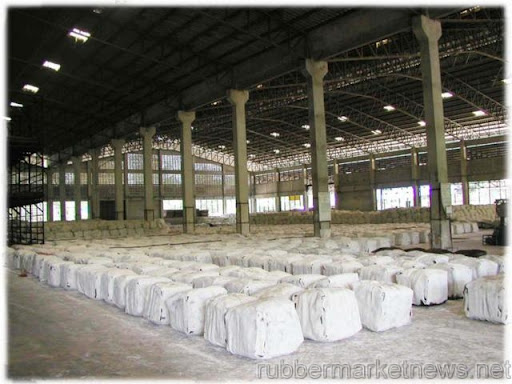 Rubber production in Thailand, the world’s largest grower and exporter, may decline as much as 8.3 percent this year from an earlier forecast if rain persists in the country’s south, according to the Thai Rubber Association.
Rubber production in Thailand, the world’s largest grower and exporter, may decline as much as 8.3 percent this year from an earlier forecast if rain persists in the country’s south, according to the Thai Rubber Association.
Output may be 3.2 million metric tons this year, down from an earlier estimate of 3.49 million tons, said Luckchai Kittipol, president of the group. Production last year totaled 3.25 million tons, according to the group.
Unseasonal rains from the start of the year caused by a La Nina weather pattern boosted Thailand’s sugar output to record levels, while inundating rubber plantations in the south. Rains may have cut rubber output by 30,000 tons in the second quarter, Luckchai said. Futures of the commodity used in tires and gloves have climbed 30 percent in the past year.
“Floods in southern Thailand have been hurting rubber production,” Luckchai said in a phone interview. The loss forecast was 50 percent higher than an initial estimate on March
30. “We have to continue monitoring the weather to see how bad it will affect rubber output this year,” he said.
Thai production may total 3.43 million tons this year from 3.25 million tons last year, the Kuala Lumpur-based Association of Natural Rubber Producing Countries said in a March report.
Rain inundated 10 southern provinces from March 23 to April 19, and may damage about 50,000 rai (19,641 acres) of rubber plantations, according to the Department of Disaster Prevention & Mitigation. Fourteen provinces in Thai south account for 80 percent of the country’s output, according to the Office of Agricultural Economics.
“Supply will remain tight probably until June when wintering season ends,” Luckchai said. Output during the low-production period falls to as low as 20 percent, he said.
Flooding in Thailand late last year was the worst in five decades, covering two-thirds of the country and damaging 11.1 million rai of agricultural land, equivalent to 8.4 percent of the total, the Office of Agricultural Economics said Dec. 24.
(Bloomberg, Bangkok, April 21, 2011)
Thursday, April 21, 2011
Thai Rubber Output may Miss Target by 8.3% if Rain Persists
Labels:
News
Subscribe to:
Post Comments (Atom)
No comments:
Post a Comment